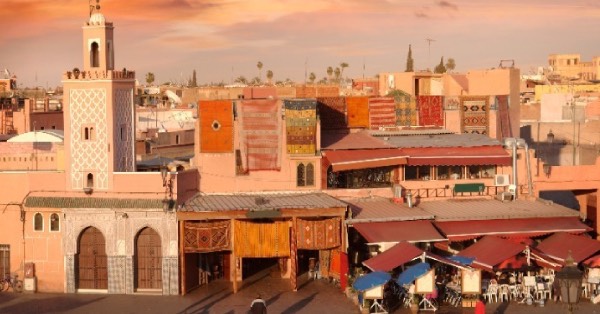- EBRD sees growth slowing to 2.5 per cent in southern and eastern Mediterranean in 2022
- Deceleration driven by the impact of the war on Ukraine
- Growth to increase to 4.8 per cent in 2023 as recovery gathers pace
The European Bank for Reconstruction and Development is projecting a slowdown in economic growth for the southern and eastern Mediterranean region in 2022, to 2.5 per cent, according to its latest Regional Economic Prospects report, published today.
The forecast is largely in line with the Bank’s economic update of March 2022, which revised down its November forecast of 4.3 per cent growth this year.
The impact of the war on Ukraine on the SEMED region will primarily be felt through higher oil and food prices for consumers, as well as secondary effects on budgets, food security and medium-term growth drivers. All countries in the region depend on imported petroleum products, while several – including Egypt, Tunisia and Jordan – depend on imported food products as well.
In addition, there is likely to be a negative impact on tourism in some SEMED countries, although new opportunities could arise in the area of renewable energy investments, given the countries’ potential in this regard.
Higher growth of 4.8 per cent is forecast for 2023 as the recovery gathers pace in most countries and as economic and governance reforms in all countries advance and give a boost to the recovery.
The SEMED economies in detail
In Egypt, growth in the first half of fiscal year 2021-22 averaged 9 per cent year on year, driven by improvements in tourism, manufacturing, construction, wholesale and retail trade, and agriculture.
The recovery is expected to continue, and growth is expected to pick up to 5.7 per cent in fiscal 2021-22, stabilising at 5 per cent in fiscal 2022-23. Higher demand and prices for Egypt’s gas exports could sustain growth in the medium term, while the International Monetary Fund (IMF)-supported programme should support reform implementation and investor confidence. However, rising prices for wheat, food products and petroleum due to the war on Ukraine will have an adverse impact.
Growth in Jordan is forecast at just 1.9 per cent in 2022, as the implications of the war on Ukraine weigh on tourism and trade flows and rising commodities prices damp private consumption.
In 2023, growth is expected to pick up to 2.5 per cent, as global headwinds ease, supporting stronger cross-border trade and a recovery in the tourism sector. Economic growth is also estimated to benefit from IMF-supported reforms in the medium and long term, but is likely to remain moderate as the necessary return to fiscal discipline caps government spending, not least as the government is raising social spending in 2022 to mitigate the impact of the war on Ukraine.
The main risks to the outlook include the erosion of real competitiveness stemming from an overvalued exchange rate, regional instability and a potentially slower-than-expected recovery in partner economies.
Lebanon continues to experience its most serious economic crisis in decades, with an estimated contraction in gross domestic product (GDP) of 10 per cent in 2021. However, a limited rebound to 1 per cent growth is expected in 2022 as the economic collapse bottoms out and the political deadlock eases following the May 2022 elections, allowing for some progress on reforms. Still, increasing energy and food prices due to the war on Ukraine are expected to weigh on consumption.
The recent staff-level agreement on an IMF-supported programme raises hopes of an economic recovery based on some fundamental reforms, but formal agreement and disbursement are expected to face delays, particularly as significant central bank reforms and parliamentary milestones are prerequisites. In light of this, economic recovery is expected to remain modest in the short term, with GDP growth unlikely to exceed 3 per cent, even in 2023.
Morocco’s economy recovered strongly in 2021, posting 7.4 per cent growth after a pandemic-driven contraction of 6.3 per cent in 2020. The recovery was mainly driven by a record harvest season and rebounds in manufacturing, trade, construction and business services, amid one of the best vaccination programmes in the EBRD regions.
However, a slowdown of 1.2 per cent is expected in 2022 due to unfavourable weather effects on agricultural output and the impact of the war on Ukraine.
Global supply-chain disruptions and the sharp increases in hydrocarbon prices are likely to carry over into the next year, although Morocco could see a rebound of 3 per cent growth in 2023 as agriculture recovers and the pace of growth returns to pre-pandemic levels.
In Tunisia, the growth outlook for 2022 and 2023 is subdued, at 2 per cent and 2.5 per cent, respectively. The war on Ukraine and the rise in prices of oil and wheat will hit both households and the public budget.
Economic recovery will depend on progress on a new IMF-supported programme that would provide much-needed external financing and technical assistance. It would also boost the government’s ability to tackle contentious but essential reforms, such as lowering the public-sector wage bill and reforming subsidies, which face strong opposition from unions and certain parts of the population.









































